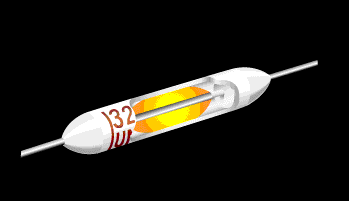About Thermal links
Thermal links is a overheat protection component which open circuits against overheat. It detects the heat caused by the over-current due to short circuit or component breakdown. (Fig. 1)
Other overheat protection components that often used, are thermostat, positive temperature coefficient (PTC) and so on. They open the circuit when the temperature rises by foreseeable trouble; and then they automatically reset itself when cooling down by removing the cause. But thermal links, as a final safety device, will not reset after its function because it is used to surely prevent from serious accident, possibly starting a fire.
This point, as a single-use device, is the same as current fuse, but the trigger of the function is different. A current fuse use self-heat caused by excessive current to melt its fuse element, and open the circuit. Meanwhile, thermal links generates little self-heat, because the internal resistance is very small. The fusible alloy of thermal links, therefore, will be melt due to rising ambient temperature, and then open the circuit.
The protection by thermal links will be needed, in the case the temperature of the device increases sharply by a small current increase by which it is difficult for current fuse to function.
Thermal links is, unlike current fuse, seldom replaced by consumers, so it is not familiar to them. But as we mentioned above, it is indispensable for overheat protection.
Fig. 1

